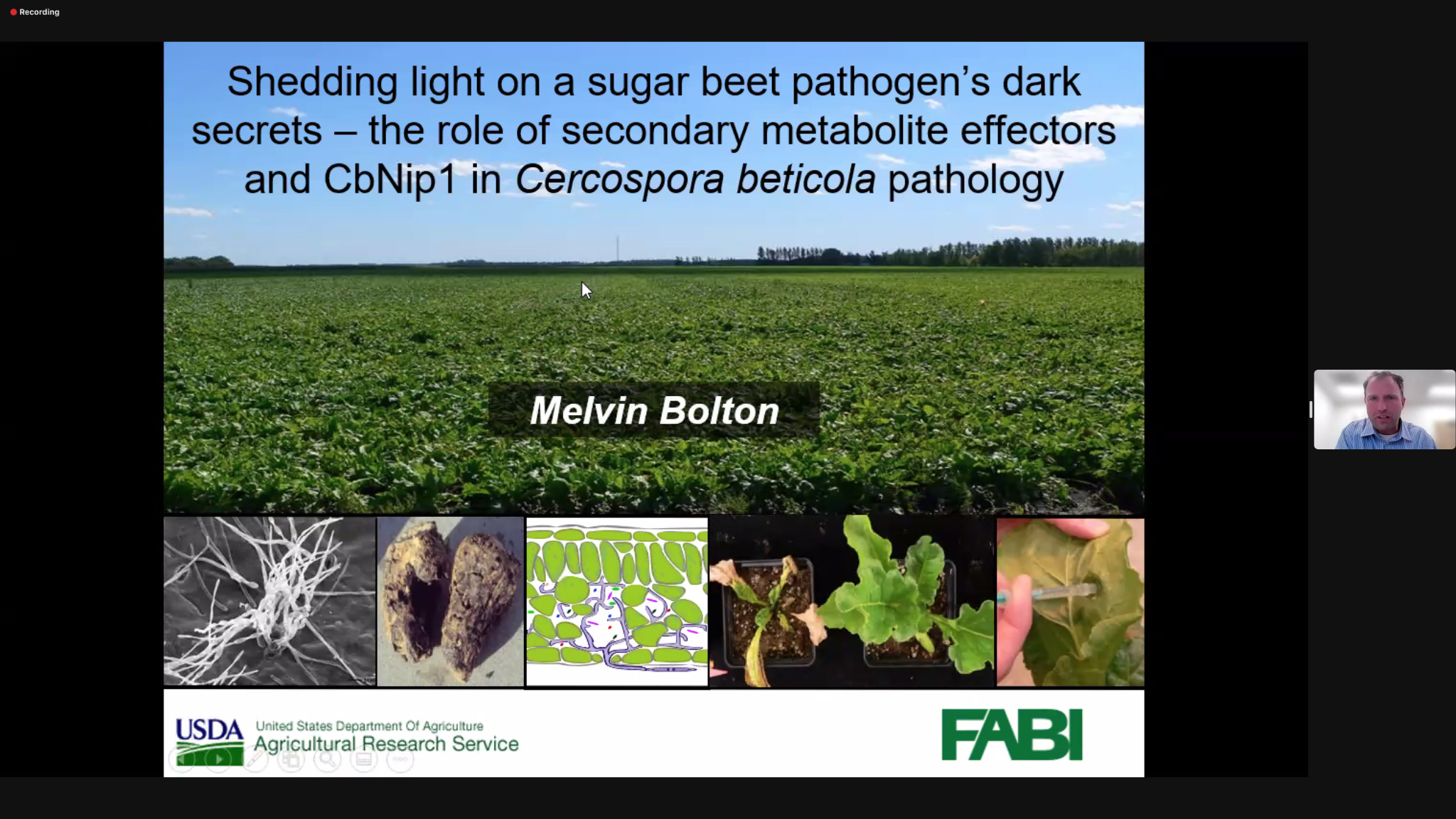FABI International Seminar Series looks at fungicide resistance in Sugarbeet 2022-10-02
The lead Research Plant Pathologist at the Sugarbeet and Potato Research Unit in Fargo North Dakota, Dr Melvin Bolton, presented a talk “Shedding light on a sugar beet pathogen’s dark secrets - the role of secondary metabolite effectors and CbNip1 in Cercospora beticola pathology” at the FABI International Seminar on 29 September.
Cercospora leaf spot (CLS) is the most destructive foliar disease of sugar beet (Beta vulgaris ssp. vulgaris L.) worldwide. The disease is caused by the fungus Cercospora beticola, a hemibiotrophic fungal pathogen that utilizes an array of effectors to facilitate disease. After an initial symptomless biotrophic phase of colonization, necrotic lesions appear on host leaves as the fungus switches to a necrotrophic lifestyle. The secondary metabolite effector cercosporin has been shown to facilitate disease in some Cercospora spp., likely through the light-dependent formation of reactive oxygen species that can cause host cell death. In contrast, the protein effector CbNip1 causes enhanced necrosis in the absence of light, and therefore may complement light-dependent necrosis. Despite recent gains in our understanding of C. beticola pathology, the lack of stable host resistance to CLS has necessitated that growers use fungicides to combat this pathogen. However, C. beticola populations have an uncanny ability to evolve resistance in the face of fungicide selection pressures.



